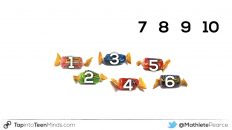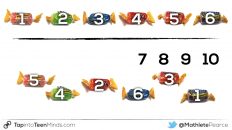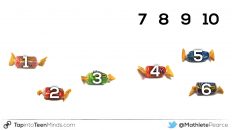Consider using these images to prompt number talks around conceptual subitizing and unitizing as we push students thinking from additive to multiplicative over time. Also, consider checking out other subitizing videos here.
Math Is Visual Prompts
Feel free to use the video and pause in-between dot cards or alternatively, use the following visual prompts.
Visual Prompt #1
Show the following image.

Then show this for a few seconds before taking it off the screen:

Have students think about what they saw and then describe it to their neighbour.
Then, have them use that mental image to help them determine how many dots there are.
Modelling this with manipulatives and/or drawing this on paper might be helpful or even necessary depending on where your students are developmentally.
Visual Prompt #2
Then show this for a few seconds before taking it off the screen:

Again, have students think about what they saw and then describe it to their neighbour.
Then, have them use that mental image to help them determine how many dots there are.
Did they notice any patterns that could help them?
Modelling this with manipulatives and/or drawing this on paper might be helpful or even necessary depending on where your students are developmentally.
Visual Prompt #3
Then show this for a few seconds before taking it off the screen:

Silent Solution
View the silent solution video at the top of the page or by clicking here.
If you want to see the full post on the Principles of Counting and Quantity, see my blog post here.




I used this twice in one day! Once with a Gr. 3 student before we looked at some area problems, then later with a Gr. 8 class as an intro to our patterning tasks. I was amazed how well it worked to get a Gr. 3 student to start seeing patterns and for the Gr. 8s as a jumping off point (some of whom struggle with multiplication and other math facts and crumble when we start something “new”).
This is fantastic to hear. I often leverage tasks in various grades and simply modify the prompts depending on their readiness. Sounds like you’re doing the same. Good on you! 🙂